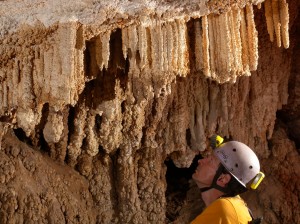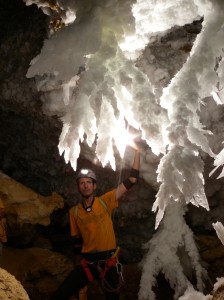Caves are mysterious places, seen by many people as alien environments. Questions such as ‘Is there air inside caves?’ or ‘Can you breathe normally?’ are typical examples of how caves are seen as dangerous places. But caves also attract people: they are among the most visited places on Earth, with show caves receiving hundreds of millions of visitors every year.
The lack of light (and therefore vegetation), the constant temperature and high moisture in the air, and the presence of beautiful and weird rock sculptures (stalactites and stalagmites) have led some to describe caves as ‘underground cathedrals’, sculpted by nature over millions of years. The shape of the spaces and rock formations can be explained by a combination of physical, chemical, and biological processes, making this environment extremely interesting from an educational point of view. In an ideal world, karst and speleology would be taught in the field – in the caves themselves.
Caves are geological wonders. Many of them remain unexplored and are difficult to access. Sometimes exploration requires extremely hard caving, which involves descending deep shafts, passing narrow squeezes, diving sumps and digging clogged passages. It is thought that we may only know about 10% of all explorable caves in the world. This makes caving one of the last frontiers of real exploration on Earth.
Because few people explore these underground environments, there is still a great deal of science to be carried out in caves. Underground meteorology, cave microbiology, studies of animals that have adapted to the subterranean environment, and many other interesting topics are delivering exceptional results to the scientific community. This type of research is often useful to society too. Karst hydrogeology, for example, is increasingly important for managing and protecting groundwater resources in carbonate areas. Some micro-organisms can only be found in caves, and they might allow us to discover new natural substances of medical interest.
Who knows what else we might find hidden in these fascinating underground labyrinths?
Jo De Waele




Discussion: no comments